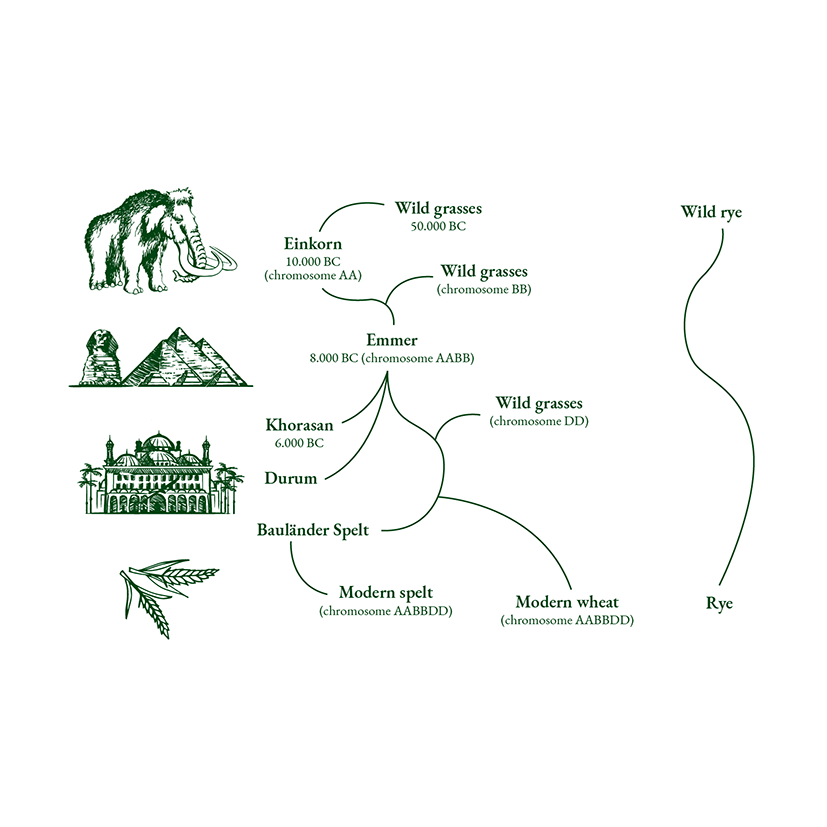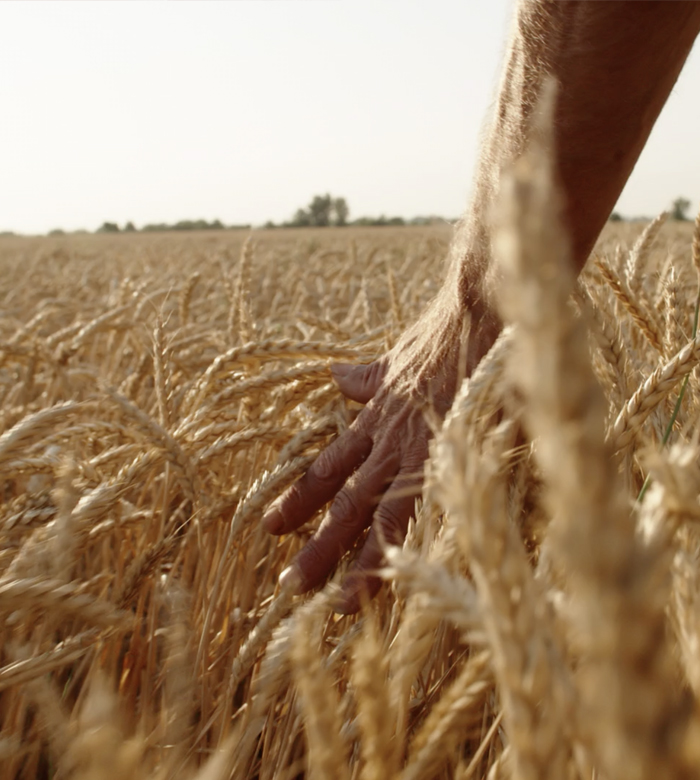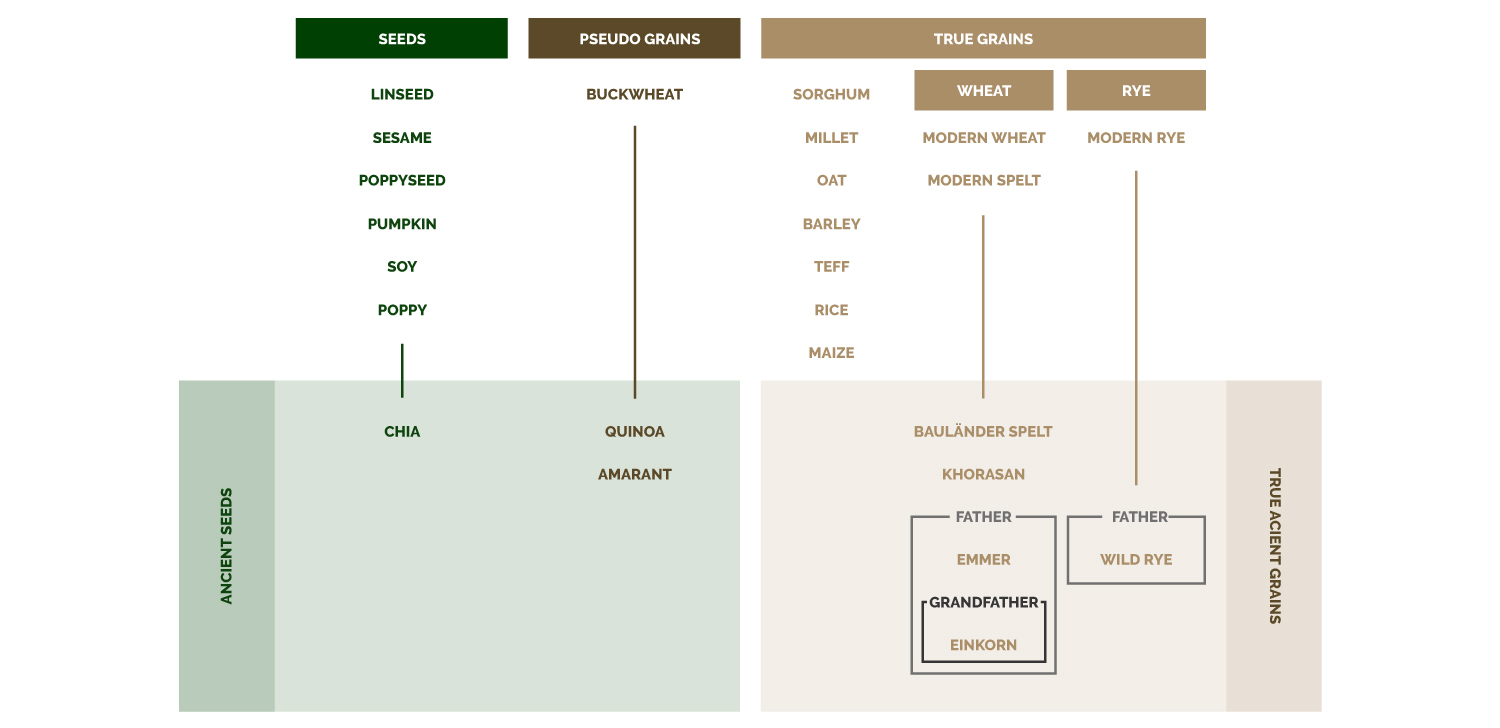Crossing these grains further with wild grass types (with a DD genome) and cultivated emmer resulted in spelt and modern wheat types. Both spelt and soft wheat have the genome sequence AABBDD.
This means that einkorn is the ‘grandfather’ of a whole host of grain types and following the same reasoning, emmer is therefore the ‘father’.
Waldkorn<sup>®</sup> with hamburger
Toast the slices of Waldkorn® and grill the beef burger. Top the toasted slice of Waldkorn® Classic with the lettuce leaves and tomato slices. Add the grilled beef burger and garnish with the dried onions and hamburger sauce. Cover with the second slice of Waldkorn® Classic.
Discover Waldkorn<sup>®</sup> with hamburger
ONS verhaal
Spelt in the grain field: find out all about this popular grain!
Spelt in the grain field: find out all about this popular grain!Brood op de feesttafel: laat je inspireren en geniet!
Brood op de feesttafel: laat je inspireren en geniet!
EXTRA












